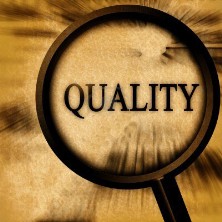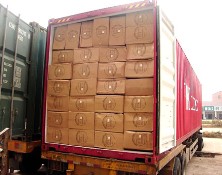CBCS - assistance, purchasing and manufacturing in China
Menu principale:
Quality control

Quality control is one of the services most in demand by buyers in China.
This is due to the lack of quality standards, often in the same production batch as there are dissimilar.
The main causes are due to the high mobility of personnel, many companies will exchange the staff according to the needs of the moment and then it comes just a skilled specialist.
The reduction in the profit of production activities in China pushes the Chinese companies looking for both sub-
Sometimes it happens that a batch is destroyed for packaging not suitable, other times because due to the haste materials are still wet packed with the consequent creation of mold during transportation, and other times you load the wrong goods in the container leaving the heavier at the end and maybe above, with consequent damage to the underlying commodity.
Our experience tells us that we must be ever vigilant Quality Control: The monitoring should be carried always, during all phases of work and not just to 'start.
Before embarking on a commercial collaboration should still make checks on the supplier,
From a visit in person is able to understand many things. It 'important to visit the offices and places of production, but more importantly, beyond good intentions, assess the real capabilities.
More and more factories disappear into thin air, even after participating in fairs, giving competitive prices, having received a deposit.
We will present the points of production to avoid these problems.
In summary our services:
Quality control of products
Packaging, storage, loading and transport
Monitoring compliance with regulatory requirements
Inform in advance about production problems and delays in delivery
Ensure that contractual obligations are met: specifications, packaging, marking and delivery
Identify problems before delivery

A full range of audit services for companies
Factory Audit
Sampling
Control pre-
Control during production
Final inspection sample
Inspection to container loading
Factory Audit
An audit and 'evaluation performed according to the standard factory SA 8000 and supplemented as necessary by specific customer requirements.
Are taken into account all the important factors such as quality system procedures, production capacity, the use of child labor, the staff facilities, hygiene ... etc..
The audit allows you to evaluate a supplier from the productive and socio-
Sampling
And 'advisable where possible, conduct a sample even before the conclusion of the contract in such a way that the capacity of the factory to achieve the level of quality and specifications required.
The evaluation of the sample is the first step in order to avoid future mistakes, misinterpretations and misunderstandings with the supplier.
Control pre-
The inspection takes place in the initial part of the production and has the purpose of ensuring that all components and materials used are in accordance with the sample and with the specifications laid down in the contract.
And correct any problems before production.
In this inspection you can also check the packaging, and of course you can check the quality of the material but not yet printed.
Control during production
The production is inspected when at least 25% of the order has been completed.
More generally, inspection allows direct control of the site to ensure that quality is maintained at every stage of production and make sure they meet the production time and delivery.
Final inspection sample
It is performed when at least 80% of the order is produced or packaged.
The samples are chosen at random, according to AQL sampling.

Inspection of load
You run to the loading of the container. The inspector, making sure that the products are the right ones, check the quality and quantity of the goods. In addition, prior to loading, ensures that the products are related to AQL sampling standards.
Subsequently assessing the entire Loading to make sure that the container is in good condition and that the whole is loaded in accordance with the amount specified in the P / O. Particular attention is paid to the load sequence in order to avoid that heavy items damaging the lighter ones.
Inspections based on AQL (acceptable quality levels)
Inspectors use the ISO 2859 tables (also known as AQL tables) to measure acceptable levels of quality. These tables are a U.S. standard with equivalents in all organizations for national and international standards (ANSI / ASQC Z1.4, ISO 2859, NF06-
How to determine the sample size and the acceptance number?
It establishes the type of inspection (normal or narrower), locates the production batch, and selects the AQL (usually 1.5%): in this way it will be possible to have the sample to be examined and the number of acceptance maximum of defective parts.
Example:
for a hypothetical inspection of a consignment of 5,000 units, with an acceptable quality level of 1.5%, Table B indicates that the sample must consist of 200 units.
The number of corresponding acceptance is 8. Therefore a maximum of 8 pieces may be defective.
What does it mean in practice?
If the number of defective units is greater than 8, the batch must be discarded.
When the match is accepted, it is understood that contains at most 1.5% of the faulty units (with a risk of error of less than 5%).
What to do with the defective items, or discarded?
Defective units identified during an inspection can be discarded, repaired or replaced.
You can also choose to sell discarded lots at a discounted price or ask for a discount hypothetical percentage of defective items.
For a demonstration see Tables
here.